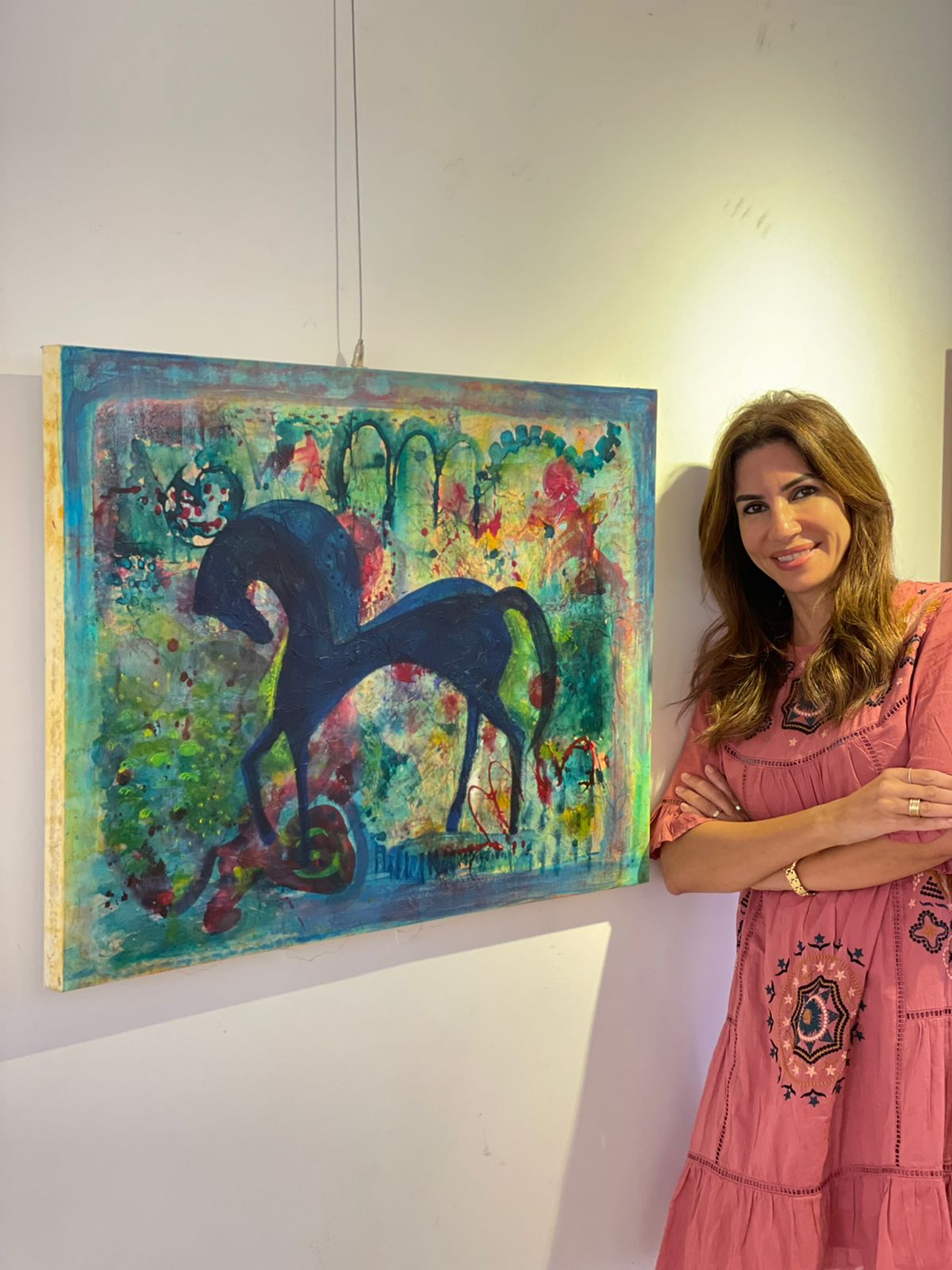
“Having a bit of both – the past and the future – is and always will be the great balance that makes this world worth living and beautiful as it is,” Dina Fahmy, one of Egypt’s pioneering contemporary artists, tells Egyptian Streets.
Since 2011, Fahmy’s art has taken different turns as she traveled to different countries across the world, initially experimenting with the warmth of idealism, to most recently, minimalism. Today, her chosen style can be qualified as colorful minimalism.
In 2015, she participated in her first group exhibition of artists at the Italian Consulate in Cairo, followed by a second collective exhibition at the Cairo Opera House. In 2016, she reached the peak of her artistic career with paintings such as “The Southern Woman” (2016).
Fahmy’s latest art projects shift digital art towards the organic, the gentle, the elegant and the beautiful. Inspired by ancient Greek mythology, she uses art as a thread to connect the audience with the past, and discover the hidden stories that carry wisdom and imagination beyond current time. Even if one cannot grasp what these ancient myths mean at first glance, one can unravel more profound wisdom, and mystery overtime.
Fahmy’s art pieces challenge our fast-paced modern world and pushes for a ‘slow art’ movement, where the viewer is encouraged to contemplate the beauty of the art rather than those that are simply visually striking or “eye candy” art. Merging the divinity of ancient mythologies with futurism, she carves her very own space in the rapidly changing digital art scene.
The painting style of ‘Myth of the 99’, her most recent work, is geometric and vibrantly colorful minimalism. The art piece tries to blend elements from the past, the present and the future. The past is honored through inspiration derived from Greek Mythology, the present is expressed in the physical journey of creating each piece – sketching out the composition, color mixing, layering – and finally the future which is captured through digitizing the work.
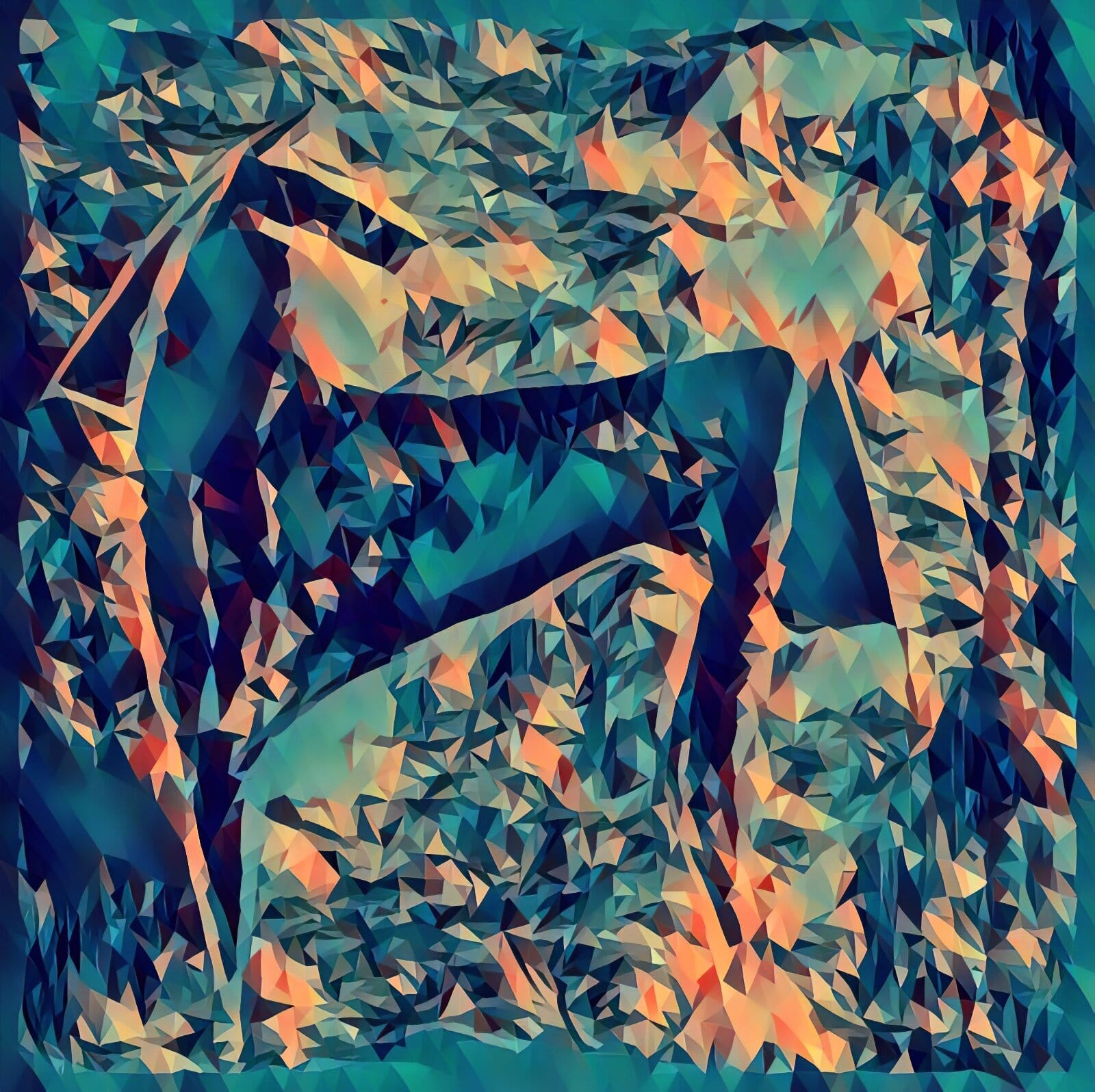
According to Fahmy, the number 99 is a magical number in numerology, believed by some to symbolize wisdom, leadership, universal harmony, karma, and destiny. To those who believe in the practice, it signifies a higher purpose and connects with one sole mission, and that it is the conclusion of one stage in life and the start of a new one. In addition, in Islam, God has 99 names Asmaa Allah Al Husna (God’s Beautiful Names); which is a very powerful indication of how significant this number is to people of certain beliefs.
From the first canvas paintings to Web 3.0, art as we know it has always been part of humanity’s technological developments. But the reverse of this relationship is also important, as in the course of their work, artists such as Dina Fahmy develop their own new techniques and push the boundaries of imagination in ways that can provoke new directions in technology and traditional art.
Egyptian Streets spoke with Dina Fahmy to explore how modern artists can cope and adapt to these technological developments, all while maintaining their simplicity and traditional art techniques.
As an artist, why is combining the past, the present, and the future so important to you particularly in our time today?
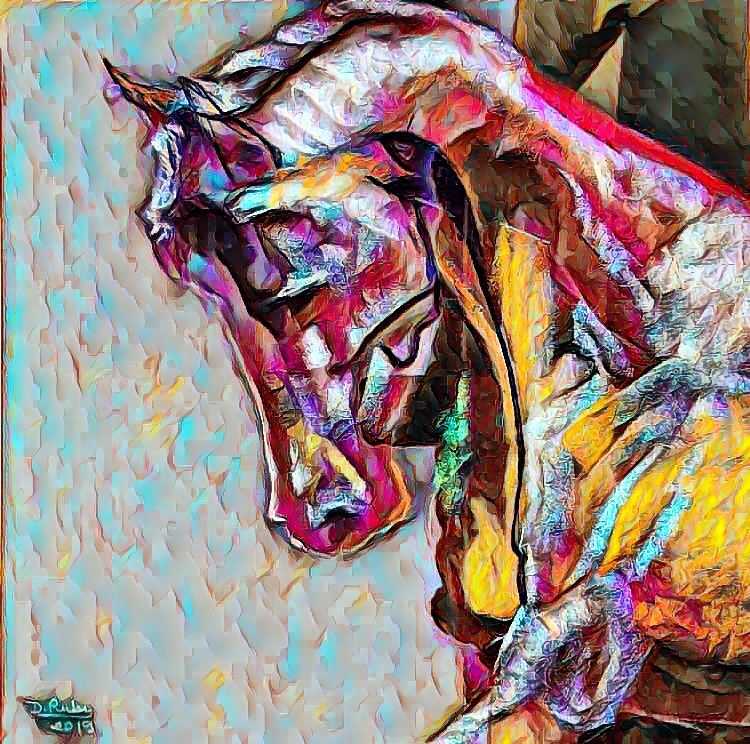
Because the past is our legacy and heritage, our lessons learnt from our ancestors, and what made us who we are today. We live in the present and must take advantage of every moment, while the future is what we look forward to, as we must be prepared for it and always be one step ahead to cope with changes.
Through this work, ‘Myth of the 99’, I wanted to emphasize the importance of old civilization’s myths and stories and how interesting these stories are to our imagination, creativity, and also to human patrimony.
What drew you to the digital art trend and what potential opportunities does it hold for artists? Is it a safe and open ecosystem?
What drew me to the digital art craze was how fast things are changing and how all of these ideas are becoming reality, despite the fact that not long ago, they were just crazy idealistic ideas.
The first time I heard about digital art and NFT was a year ago and my eyes were wide open listening carefully and i remember that since that moment, I was so amazed that I wanted to hear more and learn everything about it, especially when I saw very big potential opportunities for these artists who are struggling to their art remarked, and those who are stuck in a certain style or lack of creativity, or simply those cannot monetize easily. Digital art can be a safe and open ecosystem if you learn about it first, have all your questions answered first, and then use it properly.
From Web 1.0 to social media and now Web 3.0, can you share your view of the advantages and disadvantages the digital world is giving the art scene and artists?
The human brain develops according to the era we live in, and definitely our brain today is developed in a way to cope better with technology. See how a two-year-old toddler can handle a smart phone on a tablet so easily while probably an 80 year old would struggle more. In the world of art, it’s the same thing.
Using Web 3.0 to digitize art can have its advantages and disadvantages, as on the one hand you are completely missing the chance of enjoying it in the present, and admiring it physically in your actual surroundings, yet on the other hand if you only have it physically, then you will be missing out on the opportunities it could bring. The connection between the physical, financial and virtual world have become increasingly linked, therefore artists and the art scene should benefit from it.
Can the world of Web 3.0 encourage galleries to have new ways to collaborate and foster relationships with artists and collectors?
Of course, I’ll give you an example of this: Myth of 99 is going to have two exhibitions: physical and virtual. I will have the Myth of 99 paintings exhibited physically at CLEG Art Gallery, and at the same time I will have it represented on OpenSea and Mintable (NFT marketplace) to give an opportunity for all art lovers to enjoy it in both ways.
Nowadays, one can have their own virtual gallery and also facilitate the space for other artists to exhibit virtually.
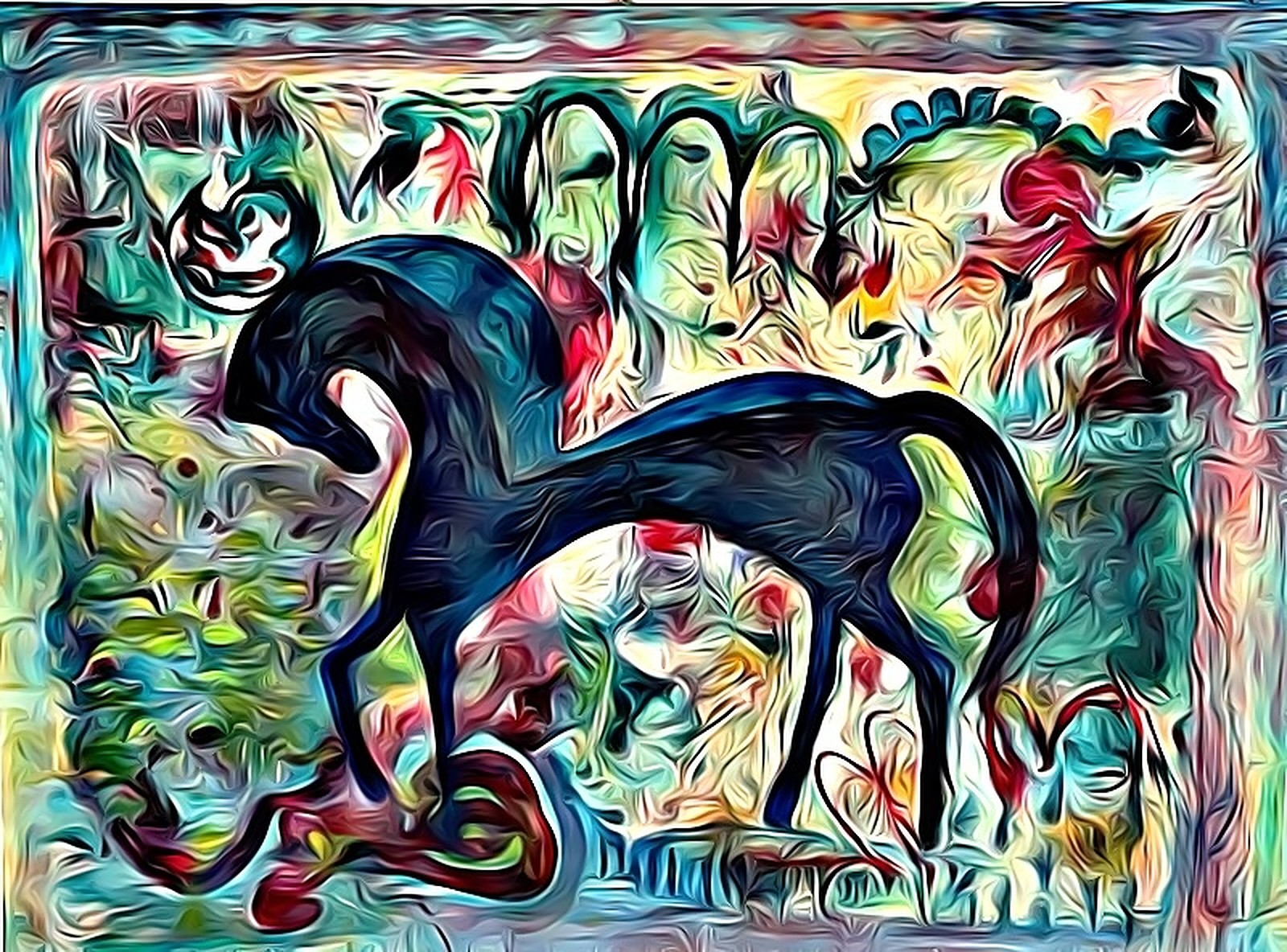
How can artists learn to cope and adapt to the new trends while remaining true and authentic, as it can be dominated by creators who aren’t serious about their practice.
Coping and adapting don’t have to be painful nor with much effort. I decided to cope and adapt to the digital world by drawing and painting in the same old, traditional way and then I digitize my art. Other artists have only made their art digitally since the beginning by using certain applications. Each artist can use what suits them better and what makes them more comfortable. Web 3.0 and NFT doesn’t have to be neither ugly nor strange art. To me, it can also be very beautiful, deep and fine art. This is part of coping and adapting, as change doesn’t have to be abrupt, it can happen smoothly.
Is it possible that the traditional model of museums will still exist in the near future, or will artists need to prepare for a world that is completely digital?
I still believe that traditional museums will still exist in the near future. Having a bit of both – the past and the future – is and always will be the great balance that makes this world worth living and beautiful as it is.
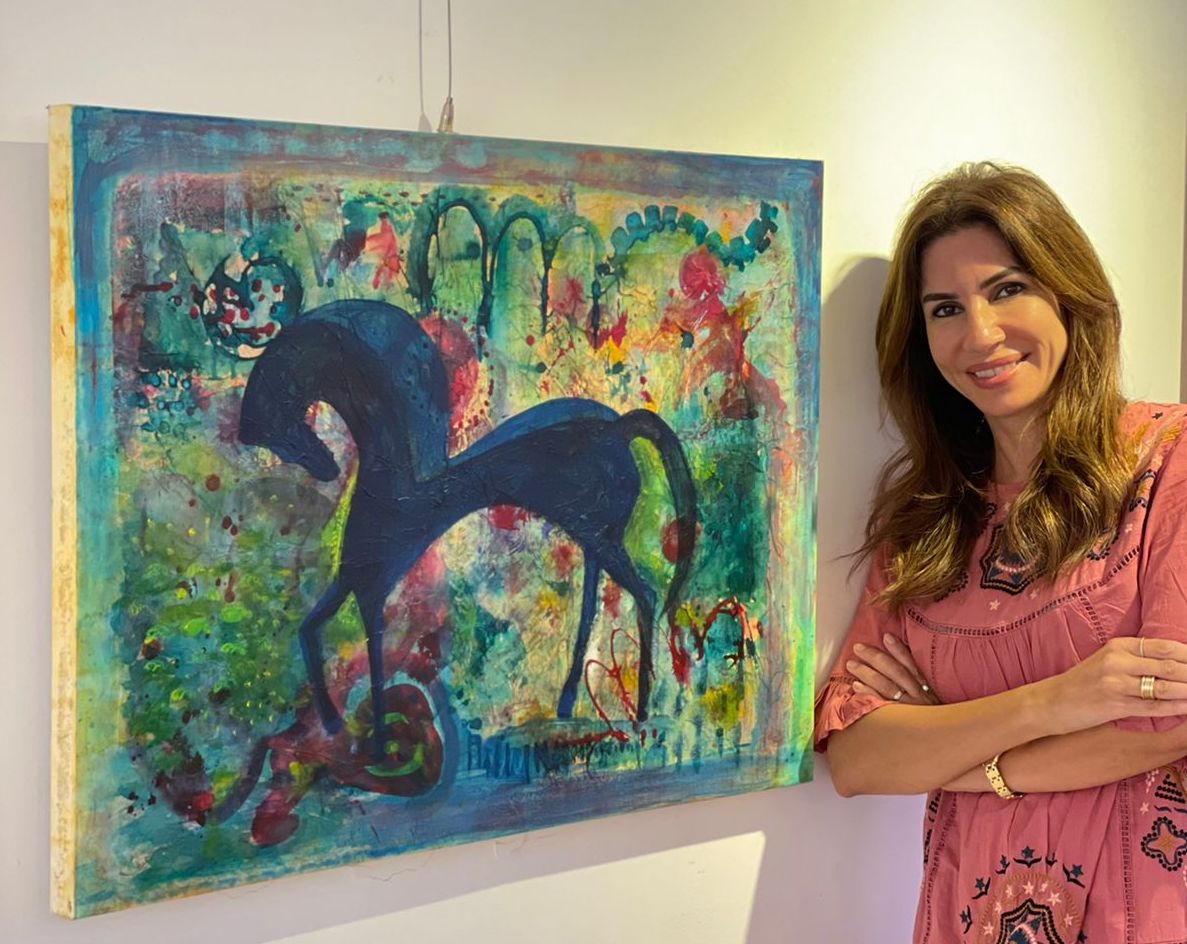




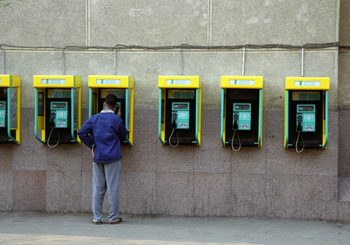
Comment (1)
[…] interested in women’s rights, cultural heritage and fashion, and political communication.[…] صيف الملك: قصر رأس التين […]© 2019 Egyptian Streets. All Rights […]